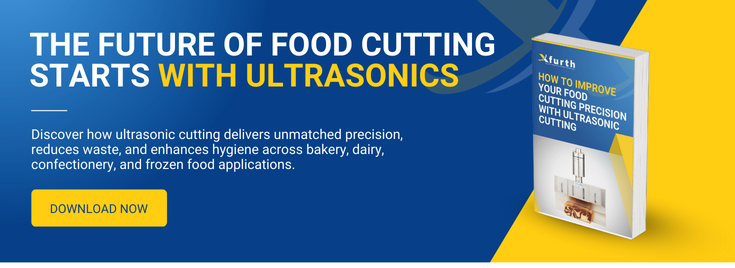
In the pantheon of plastic manufacturing technologies, hotplate welding stands as one of the most versatile and reliable joining methods for thermoplastic components.
Often overlooked in favour of faster alternatives like ultrasonic welding, hotplate welding delivers unmatched strength and sealing capabilities that make it indispensable for applications demanding robust, leak-tight assemblies. As industries increasingly require complex geometries, large-scale components, and hermetic seals, understanding the strategic advantages of hotplate welding becomes crucial for manufacturing success.
The Fundamental Hotplate Welding Process
Hotplate welding, also known as heated tool welding, represents one of the simplest yet most effective thermal joining techniques for thermoplastics. The process operates on the fundamental principle of controlled heating and pressure application, creating molecular bonds that often exceed the strength of the parent material.
The welding cycle consists of four distinct phases that ensure consistent, high-quality results. During the matching phase, components are aligned to ensure proper contact with the heated tooling, establishing the geometric foundation for the weld. The heating phase involves pressing the weld surfaces against a heated platen maintained at temperatures typically 30-100°C above the material's melting point, applying controlled pressure between 0.2-0.5 MPa to ensure uniform heat conduction into the weld ribs.
The changeover phase represents a critical transition period where components are retracted from the heated platen, which is then quickly moved away to allow part alignment. This phase must be completed as rapidly as possible to prevent cooling of the molten surfaces. Finally, the welding phase brings the molten surfaces together under controlled pressure, creating intermolecular diffusion that forms the permanent bond as the material cools and resolidifies.
This systematic approach ensures that approximately 0.015 inches of material melts from each component during heating, with an additional 0.015 inches consumed during the joining process, creating welds with exceptional structural integrity.
Distinctive Advantages Over Alternative Methods
When compared to ultrasonic and vibration welding technologies, hotplate welding delivers two fundamental advantages that make it irreplaceable in many applications: the ability to weld large components and complex curved geometries. Unlike ultrasonic welding, which is typically limited to parts no larger than 6×8 inches, hotplate welding can effectively join components ranging from one inch in diameter to five feet in length, making it ideal for large automotive assemblies, industrial equipment housings, and infrastructure components.
The uniform heating characteristic of hotplate welding ensures consistent melting across the entire weld interface, regardless of part size or complexity. This uniform heat distribution eliminates the geometric constraints that limit other welding methods, enabling the joining of intricate three-dimensional surfaces that would be impossible with alternative technologies.
Superior Joint Strength and Sealing Performance
Perhaps most significantly, hotplate welding creates joints with cross-sectional areas typically two to three times larger than those achieved through ultrasonic welding. This increased material volume translates directly into superior mechanical strength and dramatically improved sealing performance. The larger weld cross-section provides multiple redundant pathways for structural load distribution whilst creating extended sealing surfaces that resist pressure and environmental challenges.
The molten material flow during hotplate welding naturally fills surface irregularities and imperfections, creating smooth, continuous sealing surfaces that are essential for leak-tight applications. This surface normalisation effect means that precisely machined tooling can eliminate variations in part geometry, ensuring consistent seal quality across production runs.
Material Compatibility and Flexibility
Hotplate welding demonstrates exceptional material compatibility, successfully joining virtually any thermoplastic with a melting temperature below its decomposition point. This broad compatibility includes challenging materials like polypropylene, which absorbs ultrasonic vibrations and resists ultrasonic welding, as well as combinations of dissimilar thermoplastics that share compatible melting characteristics.
The process accommodates materials with various additives, fillers, and reinforcements, though manufacturers must consider how these compounds affect welding parameters. Unlike some alternatives, hotplate welding does not rely on specific material properties like acoustic transmission or vibration response, making it suitable for filled plastics, glass-reinforced materials, and thermoplastic elastomers.
Strategic Applications Across Industries
Automotive Manufacturing Excellence
The automotive industry represents one of the largest application areas for hotplate welding technology, utilising the process for components ranging from headlight assemblies to fuel tank systems. Taillight housings exemplify the technology's capabilities, where ABS housings are joined with PMMA or polycarbonate lenses using modified butt joint configurations. The ability to accommodate different melting temperatures through dual heating platens enables reliable joining of dissimilar materials essential for optical clarity and impact resistance.
Fuel tank assemblies present perhaps the most demanding automotive application, requiring up to 34 individual components to be welded using groove butt joints. Each component—including filler necks, vent lines, mounting brackets, and safety valves—requires precisely controlled heating and joining parameters, with cycle times under one minute per component. The resulting assemblies must withstand internal pressure, chemical exposure, and crash safety requirements whilst maintaining leak-tight integrity throughout the vehicle's operational life.
Medical Device Manufacturing Precision
In medical device manufacturing, hotplate welding has become the preferred method for applications requiring exceptional strength and leak-tight sealing. Single-use disposable devices, including blood filters, IV chambers, and drug delivery systems, depend on hotplate welding's ability to create hermetic seals that withstand sterilisation processes, handling stresses, and operational pressures.
The pharmaceutical filtration industry particularly benefits from hotplate welding's precision control capabilities. Complex assemblies requiring fifteen consecutive welds can be completed using servo-driven systems that provide programmable force and positional control for each weld location. This level of control ensures consistent quality across multi-position assemblies whilst accommodating stack-up variations and dimensional tolerances inherent in injection-moulded components.
Medical needle disposal containers represent another critical application where hotplate welding's sealing capabilities prevent hazardous material exposure whilst creating tamper-evident closures that ensure safe disposal practices.
Industrial and Infrastructure Applications
Large-scale industrial applications leverage hotplate welding's capability to join substantial components that exceed the size limitations of alternative methods. HDPE barrel manufacturing, polypropylene transport pallet assembly, and large-diameter pipe joining all rely on hotplate welding's ability to create strong, weatherproof seals in demanding service environments.
The infrastructure sector increasingly depends on hotplate welding for plastic pipe systems, where butt fusion welding creates joints stronger than the pipe material itself. These applications require specialised joint configurations including socket and saddle connections, each optimised for specific installation requirements and pressure ratings.
Advanced Process Control and Quality Assurance
Modern hotplate welding systems incorporate sophisticated servo-driven controls that eliminate the limitations of traditional mechanical stops. These advanced systems provide precise control over welding force, platen temperature, and displacement, enabling consistent results whilst accommodating part variations and material differences.
Servo-controlled systems can detect errors such as warped components or incorrect part loading, preventing defective welds before they occur. The ability to programme and monitor welding parameters ensures traceability and quality control essential for regulated industries like medical device and automotive manufacturing.
Temperature Control and Tooling Innovations
Contemporary hotplate welding incorporates advanced heating element designs and improved insulation systems that enhance energy efficiency whilst providing superior temperature control. Some applications utilise non-contact heating variants that eliminate material sticking issues by maintaining parts in proximity to heated platens without direct contact, though this requires significantly higher temperatures.
Tooling innovations include PTFE coatings and specialised surface treatments that prevent material adhesion whilst ensuring consistent heat transfer. Advanced systems incorporate temperature sensors and feedback control mechanisms that maintain optimal welding conditions throughout production cycles.
Addressing Process Limitations Through Innovation
While hotplate welding cycle times range from 10 seconds to several minutes—longer than ultrasonic alternatives—recent technological advances have significantly reduced these timeframes. High-temperature welding variants achieve shorter cycles by operating at temperatures up to 400°C, whilst servo-driven systems optimise heating and cooling phases for maximum efficiency.
Flash generation, inherent to the melting process, can be controlled through precise tooling design and process parameter optimisation. Modern approaches utilise controlled flash removal and joint geometries that conceal excess material, maintaining aesthetic requirements whilst preserving structural integrity.
Energy consumption concerns have been addressed through improved heating element efficiency, enhanced insulation systems, and intelligent power management that reduces idle consumption during production cycles.
Future Developments and Industry Evolution
The integration of Industry 4.0 technologies with hotplate welding systems enables real-time monitoring, predictive maintenance, and process optimisation that enhance both quality and efficiency. Advanced systems incorporate data acquisition capabilities that support traceability requirements whilst identifying process trends that indicate maintenance needs or parameter adjustments.
Hybrid welding platforms that combine hotplate capabilities with infrared and hot-gas technologies provide manufacturers with increased flexibility without requiring multiple dedicated machines. These systems enable rapid changeovers between different welding technologies as production requirements change.
Automation integration continues advancing, with robotic loading systems and vision-guided positioning that reduce labour requirements whilst improving consistency. Six-axis robots can handle complex part geometries and loading sequences that would be challenging for manual operators.
Economic and Strategic Considerations
From an economic perspective, hotplate welding offers compelling advantages through its simplicity and elimination of consumable materials. The process requires no adhesives, solvents, or filler materials, reducing both material costs and inventory complexity. Equipment maintenance requirements are minimal compared to more complex alternatives, contributing to lower total cost of ownership.
The technology's ability to accommodate part variations and design changes provides strategic flexibility that supports evolving product requirements without significant tooling modifications. This adaptability proves particularly valuable in industries experiencing rapid design evolution or customisation demands.
Conclusion
Hotplate welding of plastic parts represents a mature yet continuously evolving technology that delivers unmatched versatility for demanding applications. Its ability to create strong, hermetic seals in large, complex geometries makes it indispensable for industries where reliability and performance are paramount. As manufacturing requirements increasingly emphasise sustainability, quality, and design flexibility, hotplate welding's fundamental advantages ensure its continued relevance in the modern production landscape.
The technology's evolution through servo control integration, advanced process monitoring, and hybrid system development demonstrates its adaptability to changing manufacturing needs. For applications requiring the ultimate in joint strength, sealing performance, and geometric flexibility, hotplate welding remains the definitive solution for thermoplastic assembly challenges.
From compact benchtop systems for cleanroom environments to large-scale automated platforms for high-volume production, XFURTH's hotplate welding solutions address the full spectrum of thermoplastic joining challenges. Our expertise in tooling design, process optimisation, and quality control ensures that your hotplate welding operations achieve optimal strength, sealing performance, and production efficiency.
Partner with Xfurth to unlock the full potential of hotplate welding technology. Our application specialists will work with you to develop custom solutions that meet your specific requirements for joint strength, cycle time, and quality control. Discover how our proven hotplate welding systems can strengthen your manufacturing capabilities and ensure the reliability your customers expect.






